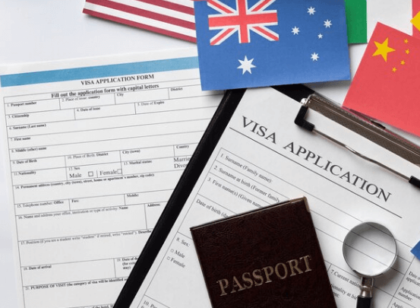UK Temporary vs Permanent Visas: What’s Best for Yo
Introduction
Navigating the complex world of immigration and visas can be a daunting task, especially when considering a move to the United Kingdom. The UK offers a myriad of visa options, each tailored to different needs and circumstances. Among these, temporary and permanent visas stand out as the most sought-after categories. In this comprehensive guide, we’ll explore the nuances of both temporary and permanent visas in the UK, helping you determine which is best suited for your personal and professional goals.
Temporary Visas: A Snapshot
Temporary visas, as the name suggests, are designed for those who plan to stay in the UK for a limited period. These visas cater to a range of purposes, including work, study, tourism, and short-term business trips. Let’s delve into some of the key types of temporary visas:
- Tier 2 Work Visas: Ideal for professionals who have been offered a job in the UK. This category demands sponsorship from a UK employer and is typically valid for up to 5 years.
- Student Visas: These are for individuals aiming to pursue their studies in UK educational institutions. The duration of the visa corresponds to the length of the course, with some allowance for pre and post-course periods.
- Tourist Visas: For those wishing to explore the UK or visit family and friends, tourist visas are the go-to option. They are usually valid for 6 months.
- Short-term Work Visas: These are for individuals coming to the UK for specific work-related activities, like training, academic research, or corporate transfers, usually valid for 1 to 2 years.
Permanent Visas: An Overview
Permanent visas, or Indefinite Leave to Remain (ILR), are for individuals who wish to settle in the UK. Obtaining ILR is a significant step towards eventual citizenship. It allows you to live, work, and study in the UK without time restrictions. Key pathways to ILR include:
- Long Residence: For those who have legally lived in the UK for a continuous period (usually 10 years).
- Family Route: If you’re a family member or partner of a British citizen or a person with settled status.
- Work Route: After holding a Tier 2 visa for a certain period (usually 5 years), you may be eligible for ILR.
- Ancestry Visa: Individuals with a British grandparent might qualify for this route, leading to permanent residence after 5 years.
Comparing Temporary and Permanent Visas: Key Considerations
When deciding between a temporary and permanent visa, several factors must be considered. Each type of visa serves different purposes and comes with its own set of benefits and limitations.
Duration and Flexibility
- Temporary Visas: They are ideal for short-term stays. Whether you’re in the UK for education, a specific job contract, or tourism, these visas are time-bound. They offer the flexibility to explore the UK without long-term commitments.
- Permanent Visas (ILR): Best suited for those who wish to make the UK their long-term home. With ILR, you’re no longer restricted by time limits on your stay, offering stability and the opportunity to fully integrate into UK society.
Rights and Benefits
- Temporary Visas: Holders generally have limited access to public funds and services. For instance, students on a Tier 4 visa have access to the National Health Service but may face restrictions in accessing certain social security benefits.
- Permanent Visas: ILR holders enjoy rights similar to British citizens, including unrestricted access to employment, education, healthcare, and social security benefits. It also opens the path to British citizenship.
Eligibility and Requirements
- Temporary Visas: These typically have more straightforward eligibility criteria, depending on the visa type. For example, student visas require proof of admission to a UK institution and financial stability.
- Permanent Visas: The eligibility criteria for ILR can be more stringent. It often involves proving continuous residence in the UK, passing the Life in the UK test, and meeting the English language requirements.
The Application Process: What to Expect
The application process for both temporary and permanent visas involves several steps, including gathering documents, meeting specific requirements, and often, attending an interview.
- Temporary Visas:
- Application forms are usually submitted online.
- You’ll need to provide evidence of your reason for visiting the UK, such as a job offer, university admission letter, or travel itinerary.
- Biometric information is typically required.
- Permanent Visas:
- The process is more rigorous, requiring extensive documentation to prove your eligibility.
- You must demonstrate knowledge of the English language and Life in the UK.
- The processing time can be longer compared to temporary visas.
Financial Implications
The financial aspect is a crucial factor in choosing between a temporary and permanent visa.
- Temporary Visas: The cost varies depending on the type of visa. For example, student visas and work visas come with different fee structures. Additionally, applicants need to demonstrate sufficient funds to cover their stay in the UK, which includes living expenses and return travel costs.
- Permanent Visas: The application fee for Indefinite Leave to Remain is generally higher than for temporary visas. Applicants also need to bear the costs of the Life in the UK test and the English language test, if applicable.
Long-Term Implications and Path to Citizenship
- Temporary Visas: While they don’t directly lead to citizenship, some temporary visas can be a stepping stone towards it. For instance, a Tier 2 Work Visa holder can apply for ILR after 5 years, which then opens the pathway to citizenship.
- Permanent Visas: Holding an ILR status for a certain period (usually 12 months) makes you eligible to apply for British citizenship, provided other criteria such as good character and continuous residence are met.
Lifestyle and Integration
- Temporary Visas: These are suitable for those not looking to permanently relocate. Your lifestyle and integration into UK society might be limited due to the shorter duration and the nature of your stay.
- Permanent Visas: ILR allows for deeper integration into the UK, including the ability to own property, access to full employment rights, and participation in the community and civic life.
Uncertainties and Changes in Circumstances
- Temporary Visas: Given their short-term nature, these visas are less flexible in accommodating changes in your circumstances. For example, losing your job could affect your Tier 2 visa status.
- Permanent Visas: Once you have ILR, you are not tied to specific conditions such as employment or sponsorship, providing more security in case of unforeseen changes in your personal or professional life.
Conclusion
Choosing between a temporary and a permanent visa in the UK depends on various factors, including your long-term goals, financial situation, and readiness for integration into British society. In the next section, we’ll provide some practical tips for applicants and conclude with final thoughts on making this crucial decision.
We’re nearing the end of the blog post. Let me know when you’re ready for the final part, including practical tips and the conclusion.

